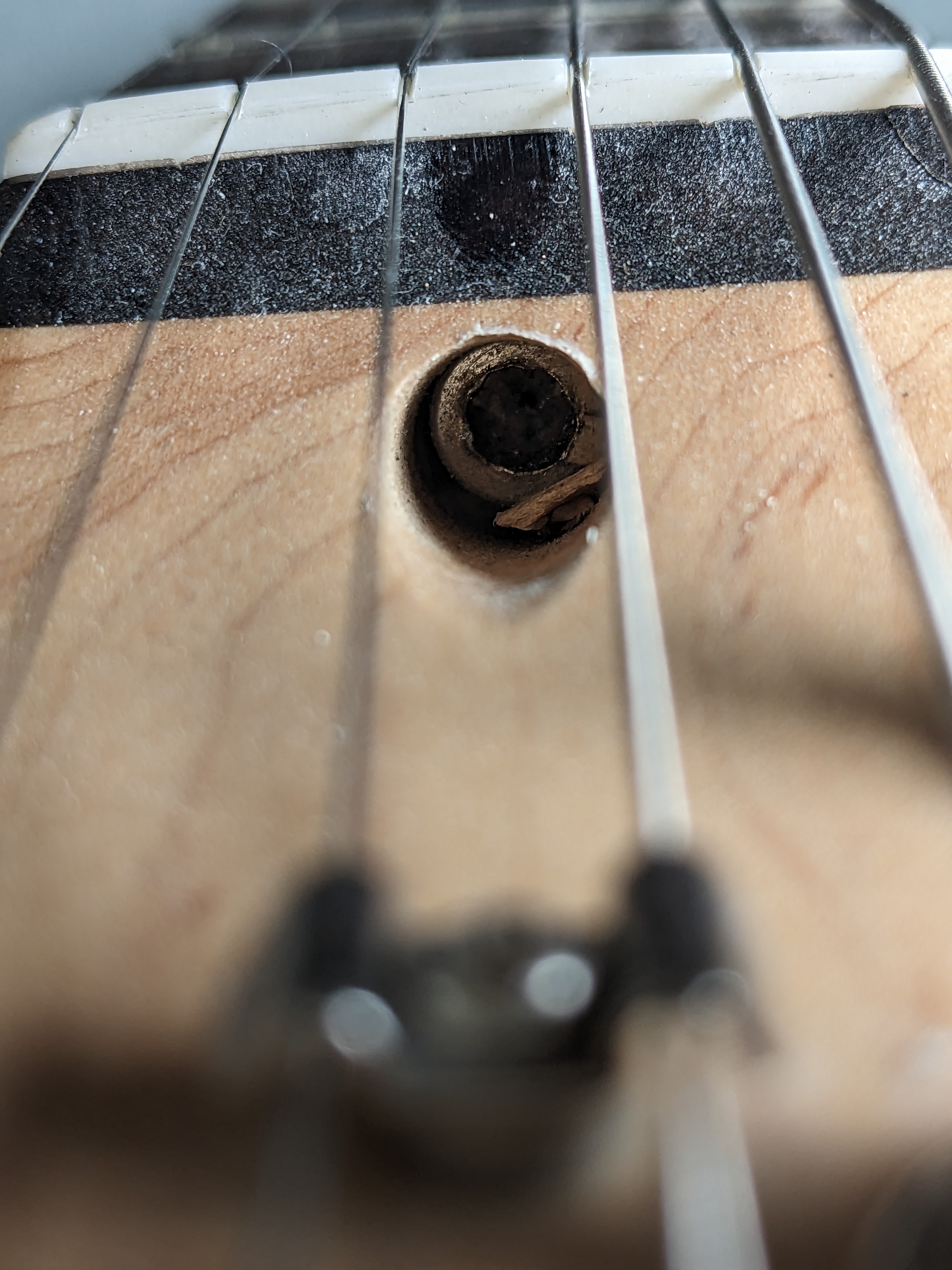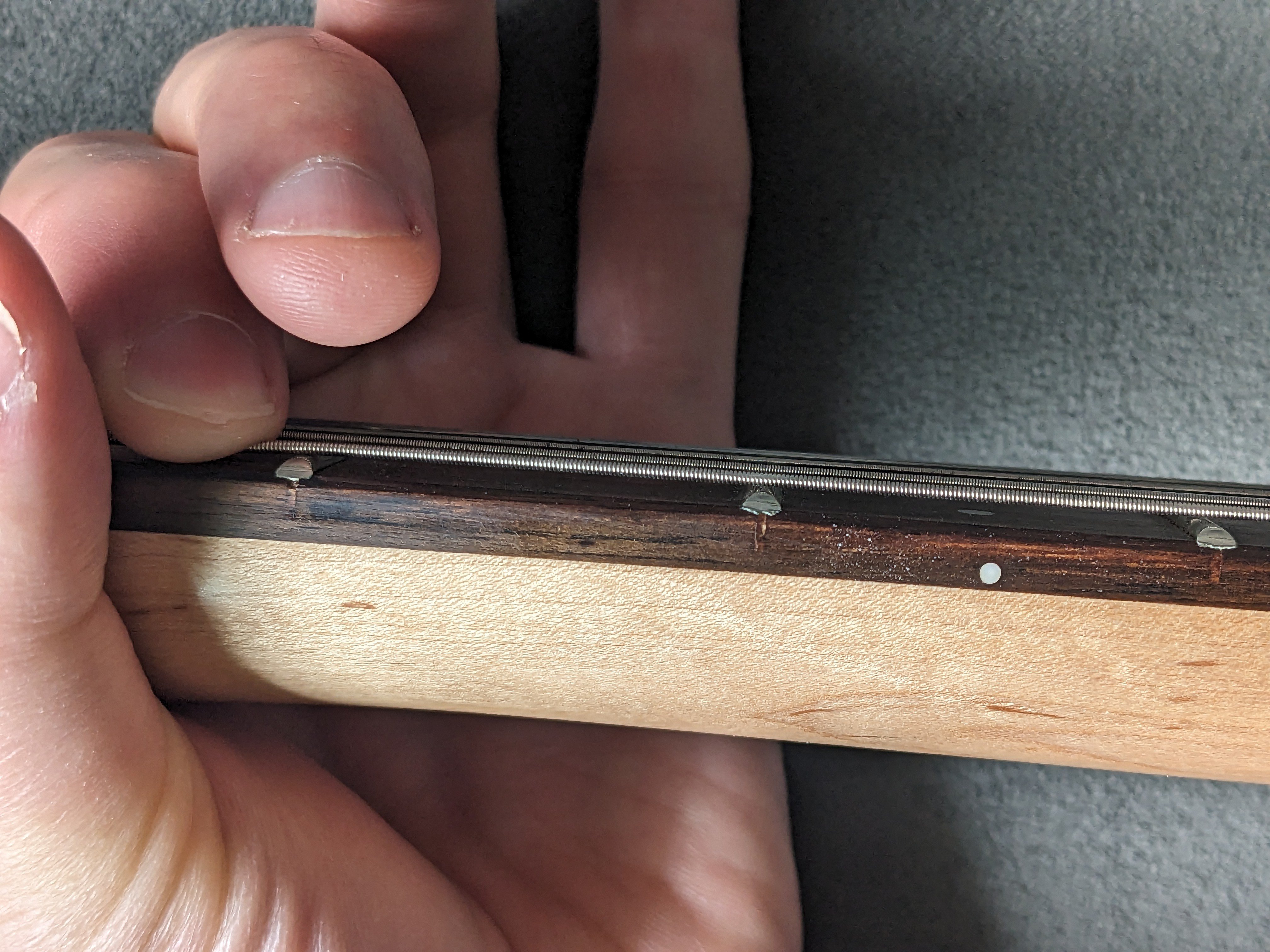this post was submitted on 16 Jun 2023
10 points (91.7% liked)
guitars
3916 readers
47 users here now
Welcome to /c/guitars! Let's show off our new guitar pics, ask questions about playing, theory, luthier-ship, and more!
Please bring all positive vibes to the community and leave the toxic stuff elsewhere.
Rules:
-
Treat others with respect. ALL others.
-
No spam
-
No self promotion
-
No NSFW
-
No circle jerk posts, there are other places for that silliness, and they are wonderful. Not here.
founded 2 years ago
MODERATORS
you are viewing a single comment's thread
view the rest of the comments
view the rest of the comments


A simple way to check is to use the strings as a straight edge. Fret a string at fret 1 and fret 15 simultaneously. That removes the bridge and nut from the equation, and gives you a perfect straight edge. Then check for a small gap between the string and fret 7. The size of that gap tells you how much relief the neck has. You can change it by adjusting the truss rod. Use very small adjustments (like 1/8 turn) and retune the strings before checking the relief again.
If you need to replace the truss rod nut, there are various techniques to remove the stripped one. Start by removing all string tension (this makes it easier to loosen). For a tool, you just need to find something that grabs enough to get it to turn. A slightly larger allen wrench, a blade screwdriver, a screw extractor, etc. Another option would be to find a bit of metal bar that fits in the socket and super glue it on. Then you can grab the bar with vice grip pliers and turn it.